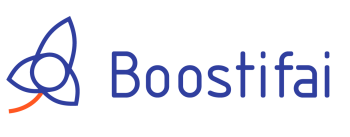What is Search Engine Optimization?
Definition of SEO
Search Engine Optimization (SEO) refers to the practice of optimizing a website or webpage to improve its visibility and ranking on search engine results pages (SERPs). The goal of SEO is to increase organic (non-paid) traffic to a website by making it more relevant and authoritative in the eyes of search engines. This involves various techniques and strategies, such as keyword research, on-page optimization, link building, and technical optimization. By implementing effective SEO practices, businesses and website owners can attract more targeted visitors, enhance their online presence, and ultimately drive more conversions and revenue.
Importance of SEO
Search Engine Optimization (SEO) is crucial for any website or online business. It plays a vital role in improving the visibility and ranking of a website on search engine results pages (SERPs). With the increasing competition in the online market, having a strong SEO strategy is essential to attract organic traffic and reach the target audience. SEO helps in optimizing the website's content, structure, and design to make it more search engine-friendly. By implementing effective SEO techniques, businesses can increase their online presence, drive more qualified traffic, and ultimately boost their conversions and revenue. In today's digital age, the importance of SEO cannot be overstated as it is the key to staying ahead of the competition and achieving long-term success in the online landscape.
How search engines work
Search engines work by using complex algorithms to crawl and index the vast amount of information available on the internet. These algorithms analyze various factors such as keywords, website structure, and user behavior to determine the relevance and ranking of web pages. When a user enters a search query, the search engine retrieves the most relevant results from its index and presents them in the search engine results page (SERP). The goal of search engine optimization (SEO) is to optimize websites and content to improve their visibility and ranking in search engine results, ultimately driving more organic traffic to the website.
On-Page SEO Techniques
Keyword research and optimization
Keyword research and optimization is a crucial aspect of search engine optimization (SEO). It involves identifying the right keywords that are relevant to your website or content and optimizing them to improve your website's visibility in search engine results. The first step in keyword research is to brainstorm and come up with a list of potential keywords that your target audience might use when searching for information related to your website. Once you have a list of keywords, you can use various tools and techniques to analyze their search volume, competition, and relevance. This analysis will help you prioritize and select the most effective keywords for your SEO strategy. Once you have identified the keywords, you can optimize your website by incorporating them into your website's content, meta tags, headings, and URLs. By doing so, you can increase the chances of your website ranking higher in search engine results and attracting more organic traffic.
Meta tags and descriptions
Meta tags and descriptions play a crucial role in search engine optimization (SEO). Meta tags are HTML elements that provide information about a webpage to search engines. They include the title tag, which specifies the title of the webpage, and the meta description tag, which provides a brief summary of the webpage's content. These tags help search engines understand the relevance and context of the webpage, making it easier for them to index and rank it in search results. It is important to optimize meta tags by including relevant keywords and creating compelling descriptions that entice users to click on the webpage. By effectively utilizing meta tags and descriptions, website owners can improve their visibility in search engine results and attract more organic traffic.
URL structure and internal linking
URL structure and internal linking are important aspects of search engine optimization. The URL structure refers to the way URLs are formatted and organized on a website. It is crucial to have a clear and descriptive URL that includes relevant keywords. This helps search engines understand the content of the page and improves the chances of ranking higher in search results. Additionally, internal linking plays a significant role in SEO. By linking relevant pages within your website, you can improve the overall user experience and make it easier for search engines to crawl and index your site. Internal linking also helps distribute link equity throughout your website, boosting the visibility of important pages. Therefore, it is essential to pay attention to the URL structure and internal linking when optimizing your website for search engines.
Off-Page SEO Strategies
Link building and backlinks
Link building and backlinks are crucial components of search engine optimization. In order to improve the visibility and ranking of a website, it is important to have a strong network of quality backlinks. Backlinks are links from other websites that direct users to your website. Search engines consider backlinks as a vote of confidence for your website's credibility and relevance. The more high-quality backlinks you have, the more likely your website will be seen as authoritative and trustworthy. However, it is important to note that not all backlinks are created equal. Quality backlinks from reputable and relevant websites are more valuable than a large quantity of low-quality backlinks. Building a strong network of backlinks requires a strategic approach, such as reaching out to other website owners for guest posting opportunities, creating valuable content that others will want to link to, and participating in industry-related forums and communities. By investing time and effort into link building, you can significantly improve your website's search engine rankings and drive more organic traffic to your site.
Social media promotion
Social media promotion is a crucial aspect of search engine optimization (SEO). With the increasing popularity of social media platforms, businesses can leverage these platforms to promote their websites and improve their search engine rankings. By sharing engaging and relevant content on social media, businesses can attract more traffic to their websites, increase brand visibility, and ultimately improve their SEO efforts. Additionally, social media promotion allows businesses to interact with their target audience, build relationships, and gain valuable insights into their customers' preferences and behaviors. Therefore, incorporating social media promotion into an SEO strategy is essential for businesses looking to enhance their online presence and drive organic traffic to their websites.
Guest blogging and influencer outreach
Guest blogging and influencer outreach are two effective strategies in search engine optimization. Guest blogging involves writing and publishing content on other websites in order to gain exposure and backlinks to your own website. This can help improve your website's visibility in search engine results and drive more organic traffic. Influencer outreach, on the other hand, involves reaching out to influential individuals or brands in your industry and collaborating with them to promote your content or products. By leveraging the reach and influence of these influencers, you can increase your brand's visibility and attract more targeted traffic to your website. Both guest blogging and influencer outreach are valuable tactics that can significantly enhance your SEO efforts and contribute to the overall success of your online presence.
Technical SEO Factors
Website speed and performance
Website speed and performance play a crucial role in search engine optimization. When a website loads quickly and performs well, it not only provides a better user experience but also improves its chances of ranking higher in search engine results. Slow-loading websites can lead to higher bounce rates, as users tend to lose interest and leave if a page takes too long to load. Additionally, search engines like Google consider website speed as a ranking factor, meaning that faster websites are more likely to appear higher in search results. To improve website speed and performance, it is important to optimize images, minimize code, enable browser caching, and choose a reliable hosting provider. By focusing on these aspects, website owners can enhance their SEO efforts and attract more organic traffic to their site.
Mobile optimization
Mobile optimization is a crucial aspect of search engine optimization (SEO) in today's digital landscape. With the increasing use of smartphones and tablets, it is essential for websites to be mobile-friendly in order to rank well in search engine results. Mobile optimization involves designing and developing a website that is responsive and easily accessible on mobile devices. This includes optimizing page load speed, using responsive design techniques, and ensuring that the website's content is easily readable and navigable on smaller screens. By prioritizing mobile optimization, businesses can improve their website's visibility and user experience, ultimately driving more traffic and conversions.
Structured data and schema markup
Structured data and schema markup play a crucial role in search engine optimization (SEO). Structured data refers to a standardized format for providing information about a webpage and its content to search engines. This helps search engines understand the context and meaning of the content, which can improve the visibility and relevance of a webpage in search results. Schema markup, on the other hand, is a specific vocabulary or code that is added to the HTML of a webpage to provide additional information about the content. This markup helps search engines interpret the data and display it in a more informative and visually appealing way in search results. By implementing structured data and schema markup correctly, website owners can enhance their SEO efforts and increase their chances of ranking higher in search engine results pages.
Content Creation for SEO
Creating high-quality and engaging content
Creating high-quality and engaging content is essential for effective search engine optimization. When it comes to content, it is important to focus on providing valuable and relevant information to your target audience. This can be achieved by conducting thorough research on the topics you plan to cover and ensuring that your content is well-written and easy to understand. Additionally, incorporating keywords strategically throughout your content can help improve its visibility in search engine results. It is also crucial to make your content engaging by using visuals, such as images and videos, and by encouraging user interaction through comments and social sharing. By creating high-quality and engaging content, you can attract more organic traffic to your website and improve your search engine rankings.
Optimizing content for target keywords
Optimizing content for target keywords is a crucial aspect of search engine optimization. By strategically incorporating relevant keywords into your website's content, you can improve its visibility and ranking on search engine results pages. To effectively optimize your content, start by conducting keyword research to identify the most relevant and high-performing keywords for your target audience. Once you have identified these keywords, ensure that they are naturally integrated into your content, including in the title, headings, and body text. However, it is important to maintain a balance and avoid keyword stuffing, as search engines may penalize websites that engage in this practice. Additionally, consider creating unique and engaging content that provides value to your readers while incorporating the target keywords. By optimizing your content for target keywords, you can enhance your website's search engine visibility and attract more organic traffic.
Using multimedia and visual elements
Using multimedia and visual elements is a crucial aspect of search engine optimization (SEO). Including images, videos, infographics, and other visual content on your website can enhance the user experience and make your content more engaging. When optimizing multimedia elements for SEO, it is important to use descriptive file names, alt tags, and captions that include relevant keywords. This helps search engines understand the context and relevance of the visual content. Additionally, optimizing the file size and format of multimedia elements can improve website loading speed, which is an important ranking factor for search engines. By incorporating multimedia and visual elements effectively, you can attract more visitors to your website and improve your overall SEO performance.
Measuring and Analyzing SEO Success
Tracking keyword rankings
Tracking keyword rankings is an essential aspect of search engine optimization. By monitoring the performance of specific keywords in search engine results pages (SERPs), businesses can gain valuable insights into their SEO strategies. Tracking keyword rankings allows businesses to identify which keywords are driving the most traffic and conversions, as well as which keywords may need further optimization. This information can help businesses refine their SEO efforts and improve their overall search engine visibility. There are various tools and software available that can assist in tracking keyword rankings, providing businesses with real-time data and analytics to make informed decisions and drive organic traffic to their websites.
Analyzing website traffic and user behavior
Analyzing website traffic and user behavior is an essential aspect of search engine optimization. By understanding how users interact with a website, businesses can make informed decisions to improve their online presence. One way to analyze website traffic is through the use of web analytics tools, such as Google Analytics. These tools provide valuable insights into the number of visitors, their demographics, and the pages they visit most frequently. By tracking user behavior, businesses can identify areas for improvement, such as optimizing landing pages or enhancing the user experience. Additionally, analyzing website traffic allows businesses to measure the effectiveness of their SEO strategies and make data-driven decisions to drive more organic traffic to their site. Overall, analyzing website traffic and user behavior is crucial for businesses looking to enhance their search engine optimization efforts and improve their online visibility.
Utilizing SEO analytics tools
Utilizing SEO analytics tools is essential for optimizing a website's performance and improving its search engine rankings. These tools provide valuable insights into various aspects of SEO, such as keyword performance, website traffic, and user behavior. By analyzing this data, website owners and marketers can identify areas for improvement and make informed decisions to enhance their SEO strategies. SEO analytics tools also help in tracking the effectiveness of different optimization techniques and measuring the success of SEO campaigns. With the help of these tools, businesses can gain a competitive edge by staying updated with the latest trends and making data-driven decisions to drive organic traffic and increase visibility in search engine results pages.





